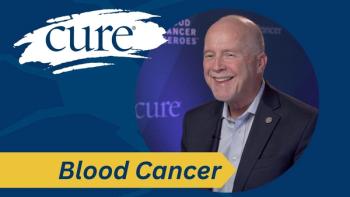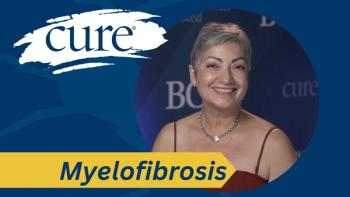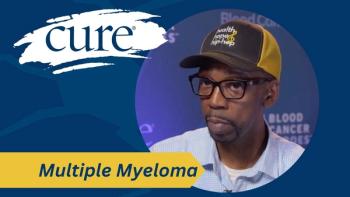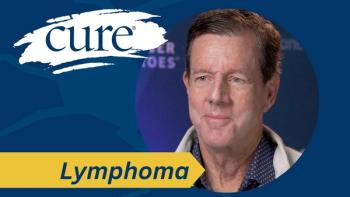
Street Clothes Make Me Feel Free from Cancer
When I wore my street clothes in the hospital instead of a gown, I felt more like a person than a patient with cancer.
After my bout with cancer and cancer treatment, I learned that we don’t really fight cancer, we surrender to the cure. From six months of hospitalizations for chemotherapy and immunotherapy, I learned that we patients don’t have a lot of agency — or control — over the process.
If the protocol calls for six-week-long cycles of treatment, then that’s what you do. You can’t barter with doctors the way I did. “Isn’t five cycles enough?” I implored my oncologist. “Can’t we just be done now?” I pleaded. But the established protocol exists for a reason: it’s been tried and tested over time. There is no room for bartering.
And so, reluctantly, I agreed to the full cycle of treatments for non-Hodgkin lymphoma. By the last cycle, I was a shadow of my former self. I had lost so much weight that my shadow looked like a pencil. I felt like a dry leaf tumbling on the wind.
But there was one thing I did every time that gave me a sense of control and normalcy. I never wore one of those hospital gowns. Not once. Not for a minute. As far as I could tell, there was no rule that patients must wear those gowns, although every other patient on the floor did wear them. Instead, I wore my normal everyday street clothes.
No baggy sweatpants and loose sweaters for me. I dressed like I would whenever I go out into public. I even wore my British driver’s cap. It’s not that I’m a rebel or rule-breaker. It’s just that I didn’t want to be perceived as a patient, as someone who is sick and weak and deserving of pity and special treatment.
I wanted to preserve whatever was left of me. I didn’t want the world to see my vulnerability. I can’t quite describe it to you, I only know of my burning necessity to maintain some part of my normal life, even in the most abnormal of times.
In previous blogs, I wrote that I painted in my room. I actually brought my easel and paints with me. Not only did I read books, I wrote books during my hospital stays. I wrote almost 100 poems about my experience and my emotions. The poems were published in cancer magazines as fast as I could write them. Astonishingly, it seems like the world needed the healing medicine of good poetry. The collected poems were eventually published in a book called, “Running from the Reaper: Poems from an Impatient Cancer Survivor,” which is now available online.
Wearing street clothes had other rewards. Whenever I could — especially whenever I was unplugged from my bags of chemo and saline — I explored the hospital, putting in my steps and getting a meal or a snack in one of the cafeterias. Often, I even went into the chapel to play the piano and look around in the gift shop.
Daily, I went down to the coffee kiosk to get a good cup of Joe. I’m a little ashamed to say that I even escaped the hospital from time to time, frequenting a coffee house a block away. I’m pretty sure I was breaking hospital rules. I’m not recommending you do as I did. I’ve always had a sneaky streak in me. During those wonderful, liberating times, I felt free of my cancer. I wasn’t a patient. I looked like everyone else roaming around. I was the old me. I’m proud to share one of the poems from the collection, one about how I couldn’t bring myself to wear those butt-baring gowns.
Elvis Has Left the Building
Three things to tell you first:
My middle name is Elvis.
I’ve always been a rebel.
My hospital room was the nicest you ever saw.
But a cage gilded with gold is still a prison.
For me, I could never stand a cubicle job
or one in a small office. I feel imprisoned.
Raised in the wilds of Alaska, I need the freedom of wide, open spaces.
I would have tied bedsheets together and rappelled out the eight-story window
if they gave me enough sheets.
Instead, for six months, I snuck out from the oncology floor
half a dozen times a day. My great escape didn’t include
jumping over a barbwire fence on a motorcycle.
It was more devious than that.
I’d shuffle out to the elevator lobby with my IV poll
and act nonchalant like I was looking at a magazine or the vending machine
until the nurse at the desk was distracted, then I’d push the button
and take the first elevator anywhere but there.
Sometimes, when the nurses were waiting
for the next chemo bag to come up from pharmacy
(which sometimes took two or three hours)
I’d sneak past security at the main door
and leave the building entirely, walking blocks away,
ducking into coffee houses, a grocery, a record shop and a bakery.
To aid my duplicity, I never wore those back-and-ass-baring hospital gowns.
I always wore my street clothes so folks wouldn’t know I was a patient.
It felt good to be seen as normal, even if only for a spell.
For those brief but cherished escapes, I was free of my cancer, free of my fear.
For more news on cancer updates, research and education, don’t forget to




